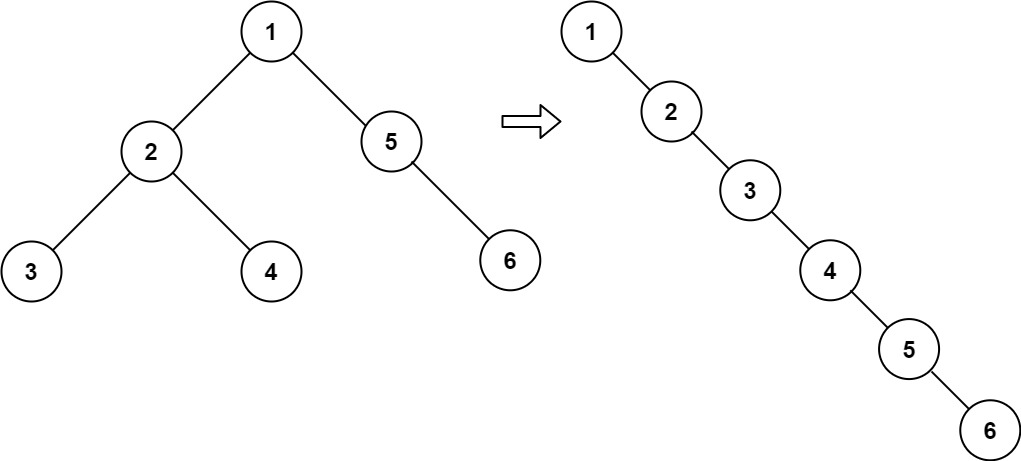LeetCode-in-All
114. Flatten Binary Tree to Linked List
Medium
Given the root of a binary tree, flatten the tree into a “linked list”:
- The “linked list” should use the same
TreeNodeclass where therightchild pointer points to the next node in the list and theleftchild pointer is alwaysnull. - The “linked list” should be in the same order as a pre-order traversal of the binary tree.
Example 1:

Input: root = [1,2,5,3,4,null,6]
Output: [1,null,2,null,3,null,4,null,5,null,6]
Example 2:
Input: root = []
Output: []
Example 3:
Input: root = [0]
Output: [0]
Constraints:
- The number of nodes in the tree is in the range
[0, 2000]. -100 <= Node.val <= 100
Follow up: Can you flatten the tree in-place (with O(1) extra space)?
Solution
// Definition for a binary tree node.
// pub struct TreeNode {
// pub val: i32,
// pub left: Option<Rc<RefCell<TreeNode>>>,
// pub right: Option<Rc<RefCell<TreeNode>>>,
// }
//
// impl TreeNode {
// #[inline]
// pub fn new(val: i32) -> Self {
// TreeNode {
// val,
// left: None,
// right: None
// }
// }
// }
use std::rc::Rc;
use std::cell::RefCell;
type Node = Option<Rc<RefCell<TreeNode>>>;
impl Solution {
pub fn build_tree(inorder: Vec<i32>, postorder: Vec<i32>) -> Node {
Solution::builder(&inorder[..], &postorder[..])
}
fn builder(inorder: &[i32], postorder: &[i32]) -> Node {
let i = inorder.len();
if inorder.is_empty() || postorder.is_empty() {
return None
} else {
let n = postorder.len() -1;
let mut root = TreeNode::new(postorder[n]);
let m = inorder.iter().position(|&x| x == postorder[n]).unwrap();
root.left = Solution::builder(&inorder[0..m], &postorder[0..m]);
root.right = Solution::builder(&inorder[m+1..i], &postorder[m..i-1]);
Some(Rc::new(RefCell::new(root)))
}
}
}

